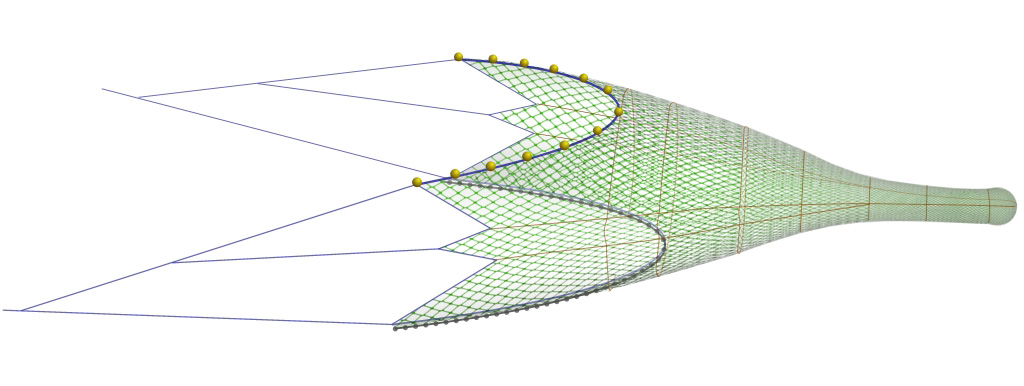Off Bottom Trawl
Summary
This is a trawl that, by the way it is rigged and towed, swims clear of the seabed but close enough to target some of the demersal species.

Size selectivity
Towing a trawl in this manner is more for species selection rather than size selection. Size selection can be done fairly easily by including in the trawl other selectivity devices such as square mesh, larger diamond mesh or even T90 mesh.
Other information
The idea of this type of trawling is to target some of the higher swimming demersal species such as Whiting, John Dory and bass. The gear is sometimes used only at night, or only during daylight when the target species is known to be swimming high off the bottom. There are several demersal trawls that can be rigged to catch similar species but in the off-bottom trawl the net is actually towed clear of the seabed, avoiding all bottom contact.
Although the trawl is towed clear of the bottom it is not a 'pelagic trawl'. True pelagic trawls are designed with huge meshes to catch shoaling fish and depend on the shoal reacting as one mass of fish to herd them down into the trawl. The off-bottom trawl still relies on individual fish's reactions to herd them down into the net, like other demersal trawls. The off-bottom trawl will usually have large meshes in the mouth probably no larger than 300mm, maybe a small section of 600mm mesh at the end of the wings on some of the bigger nets, then tapering down to a suitable mesh size in the cod-end to retain all target species above the minimum landing size (MLS) or minimum conservation reference size (MCRS)
Selection type
-
- Pre-selection